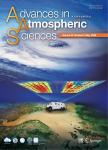版权所有:内蒙古大学图书馆 技术提供:维普资讯• 智图
内蒙古自治区呼和浩特市赛罕区大学西街235号 邮编: 010021

作者机构:Space Science CentreInstitute of Climate ChangeUniversiti Kebangsaan Malaysia43600 BangiSelangorMalaysia Faculty of Science and Natural ResourcesUniversiti Malaysia Sabah88400 Kota KinabaluSabahMalaysia School of Environmental and Natural Resource SciencesFaculty of Science and TechnologyUniversiti Kebangsaan Malaysia43600 BangiSelangorMalaysia Centre for Tropical Climate Change SystemInstitute of Climate ChangeUniversiti Kebangsaan Malaysia43600 BangiSelangorMalaysia Department of ChemistryFaculty of ScienceUniversity of Malaya50603 Kuala LumpurMalaysia
出 版 物:《Advances in Atmospheric Sciences》 (大气科学进展(英文版))
年 卷 期:2019年第36卷第12期
页 面:1355-1370页
核心收录:
基 金:supported by Newton-Ungku Omar Grant (XX-2017-002)
主 题:climate change extreme temperature trend urban environment tropical area
摘 要:This study investigates the recent extreme temperature trends across 19 stations in the Klang Valley, Malaysia, over the period 2006^-16. Fourteen extreme index trends were analyzed using the Mann-Kendall non-parametric test, with Sen’s slope as a magnitude estimator. Generally, the annual daily mean temperature, daily mean maximum temperature, and daily mean minimum temperature in the Klang Valley increased significantly, by 0.07°C yr^-1, 0.07°C yr^-1 and 0.08°C yr^-1, respectively. For the warm temperature indices, the results indicated a significant upward trend for the annual maximum of maximum temperature, by 0.09°C yr^-1, and the annual maximum of minimum temperature, by 0.11°C yr^-1. The results for the total number of warm days and warm nights showed significant increasing trends of 5.02 d yr^-1 and 6.92 d yr^-1, respectively. For the cold temperature indices, there were upward trends for the annual minimum of maximum temperature, by 0.09°C yr^-1, and the annual minimum of minimum temperature, by 0.03°C yr^-1, concurrent with the decreases in the total number cold days (TX10P), with -3.80 d yr^-1, and cold nights (TN10P), with -4.33 d yr^-1. The 34°C and 37°C summer days results showed significant upward trends of 4.10 d yr^-1 and 0.25 d yr^-1, respectively. Overall, these findings showed upward warming trends in the Klang Valley, with the minimum temperature rate increasing more than that of the maximum temperature, especially in urban areas.